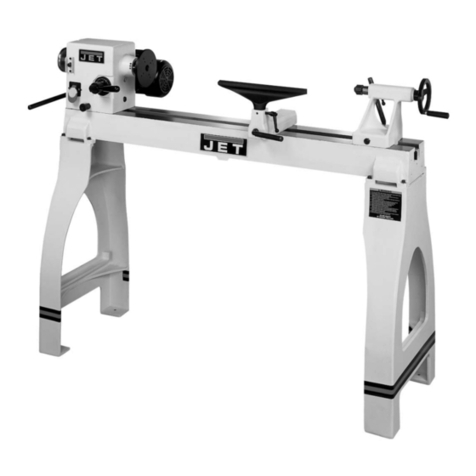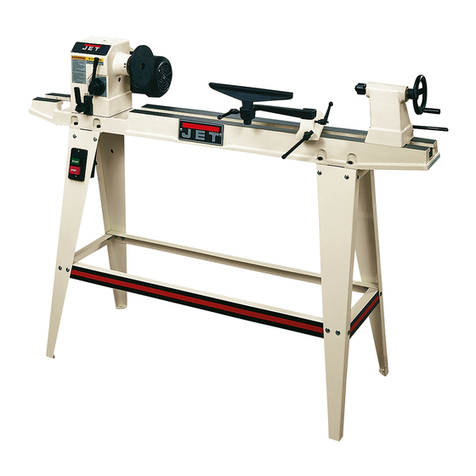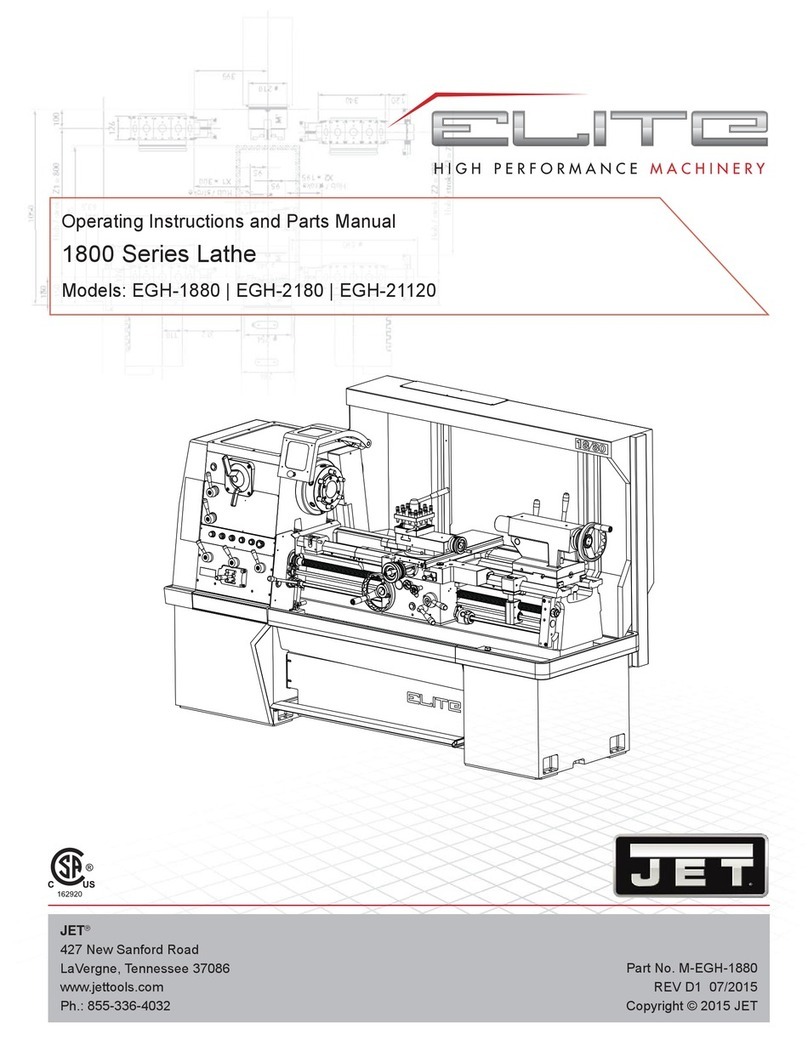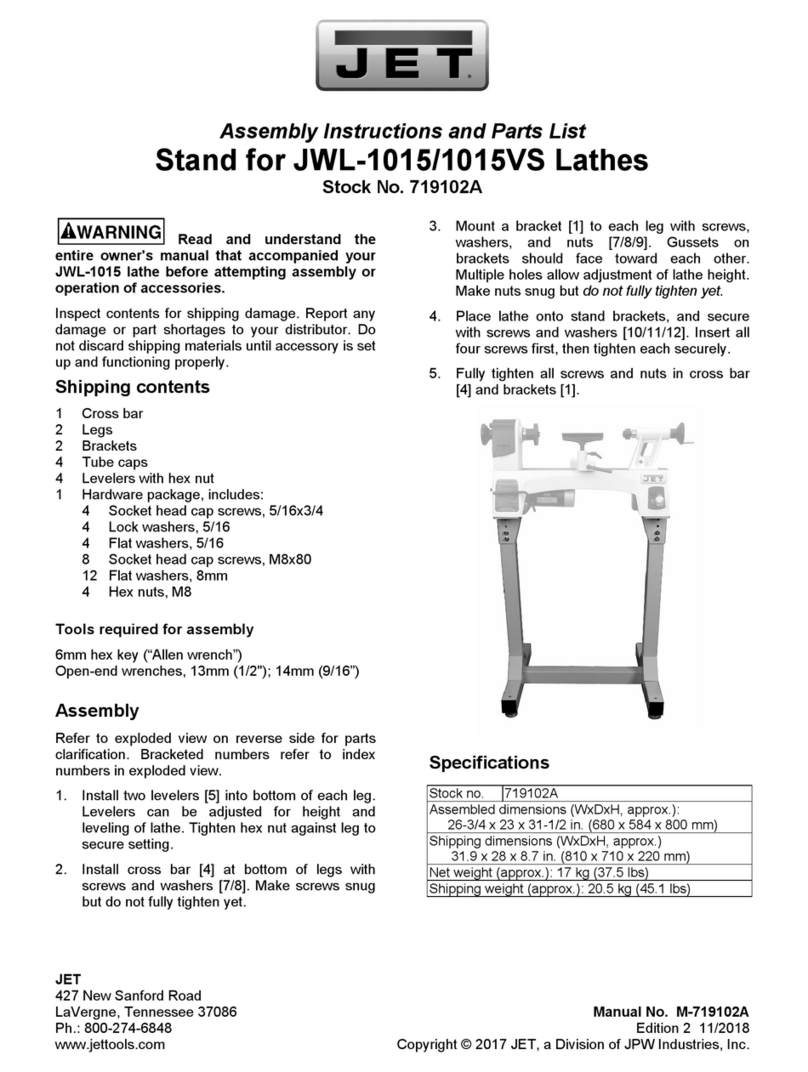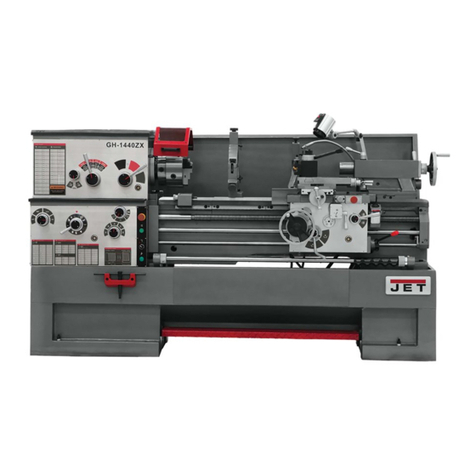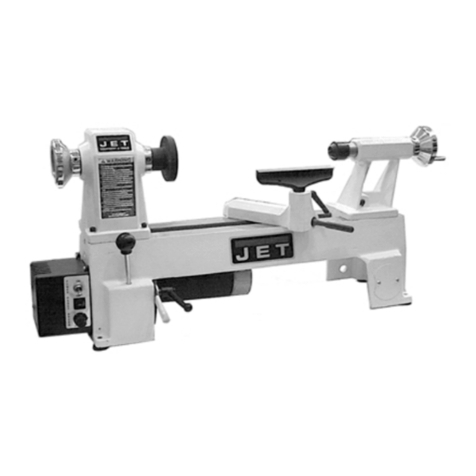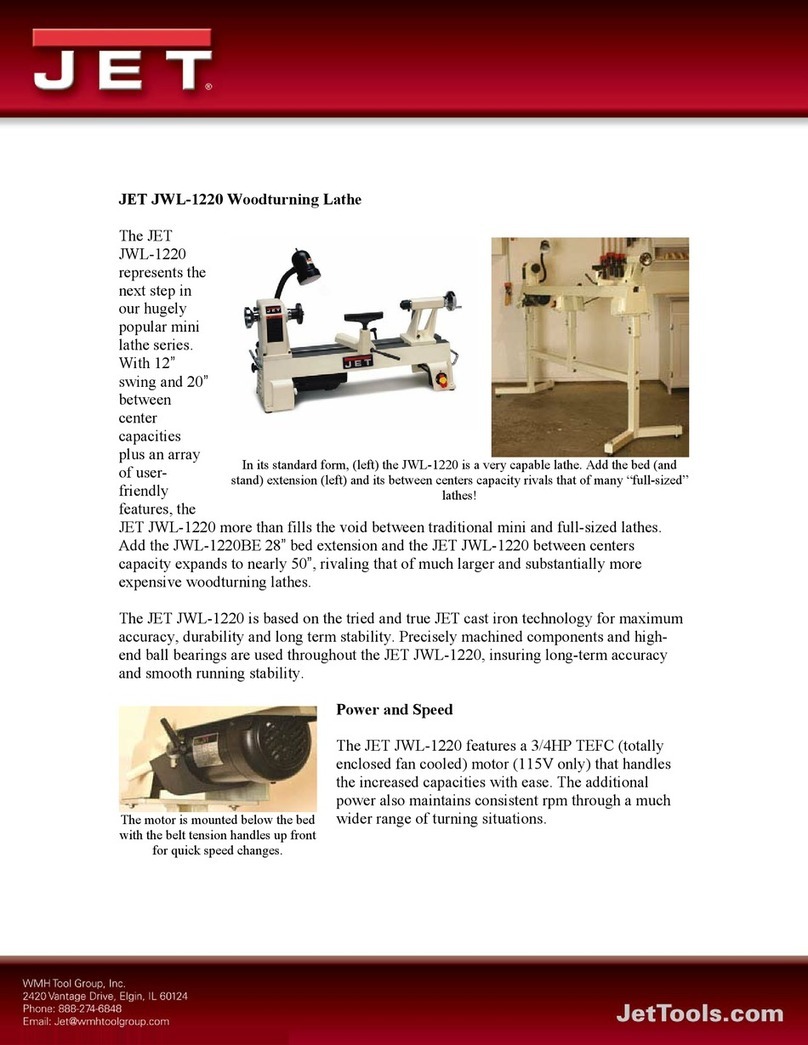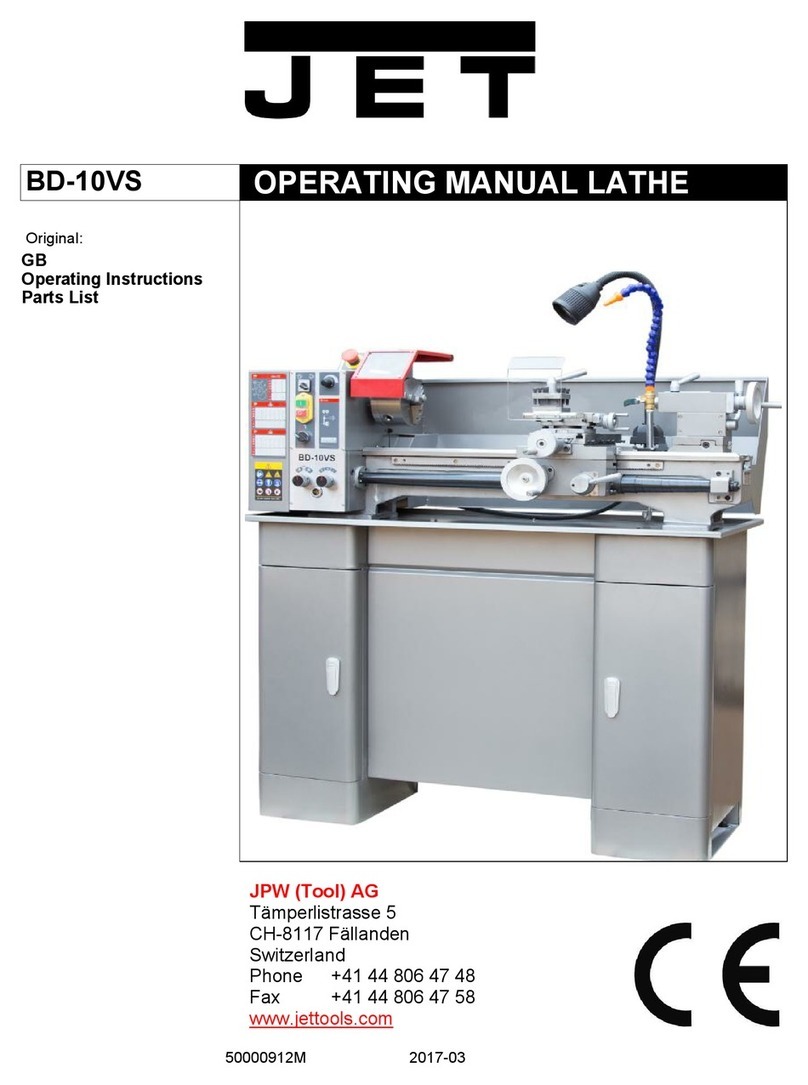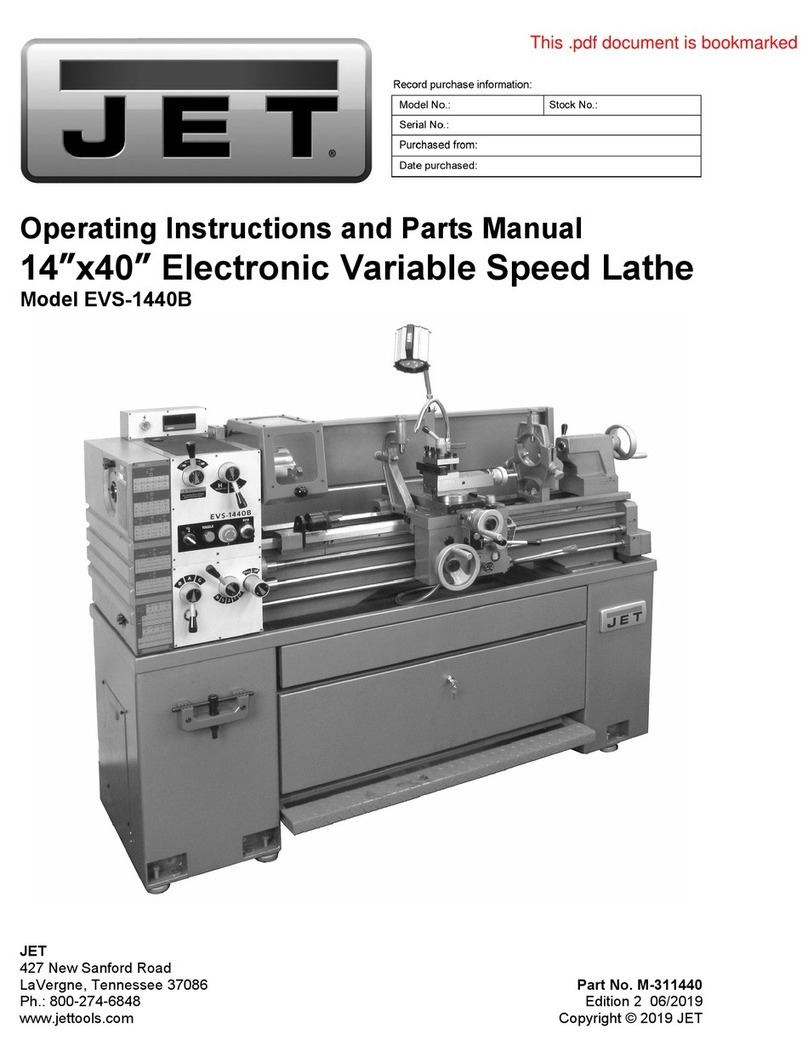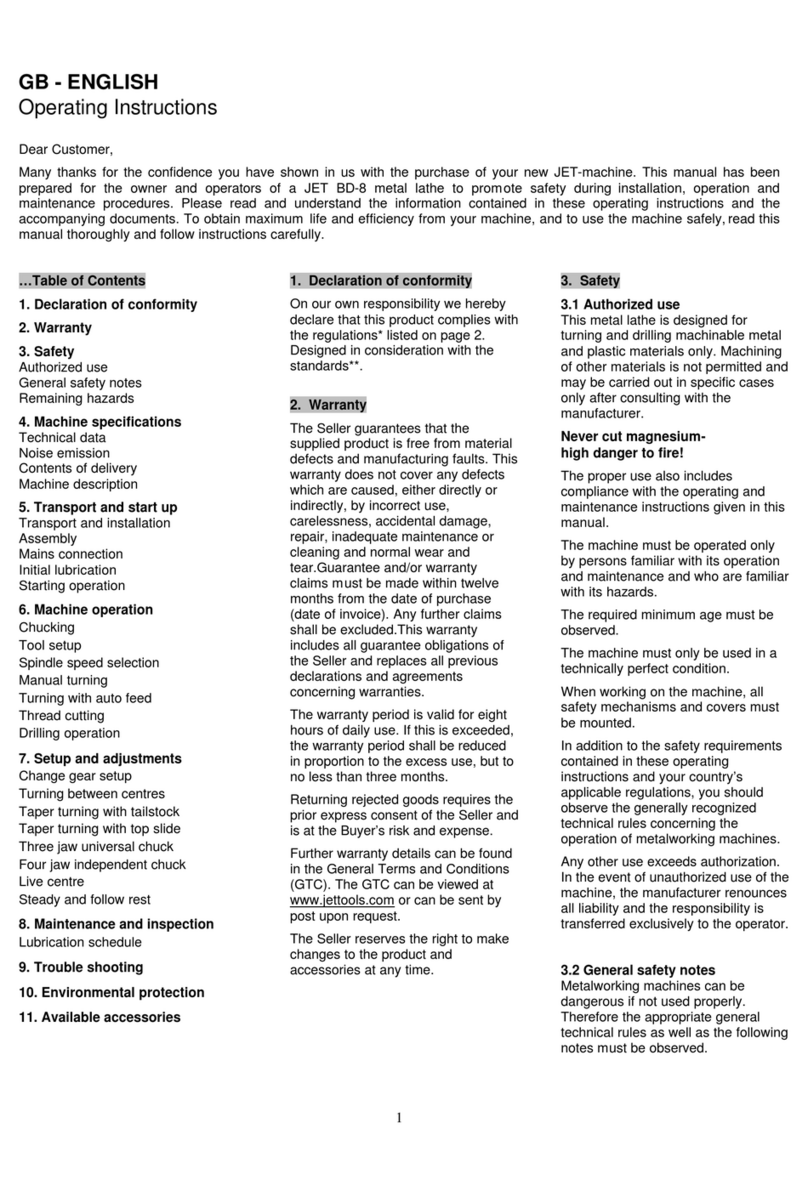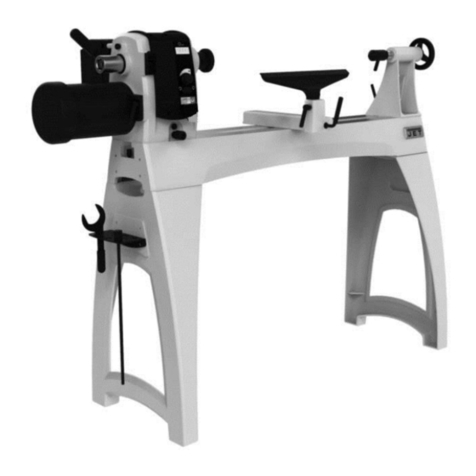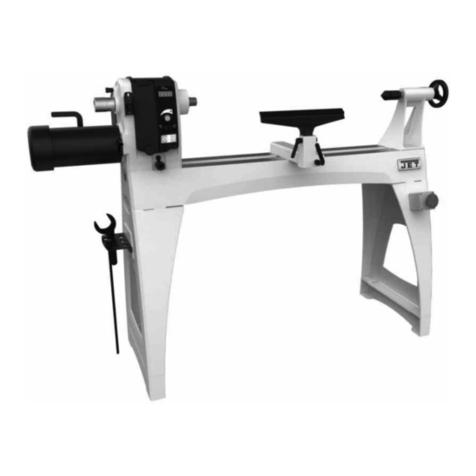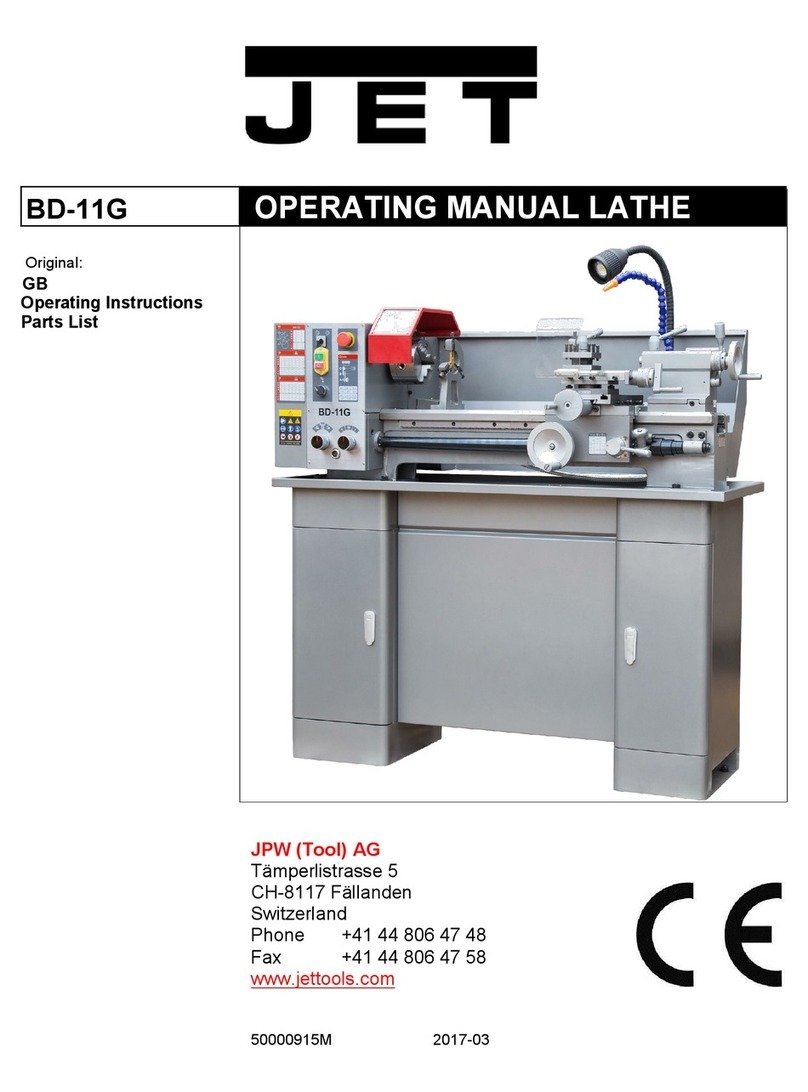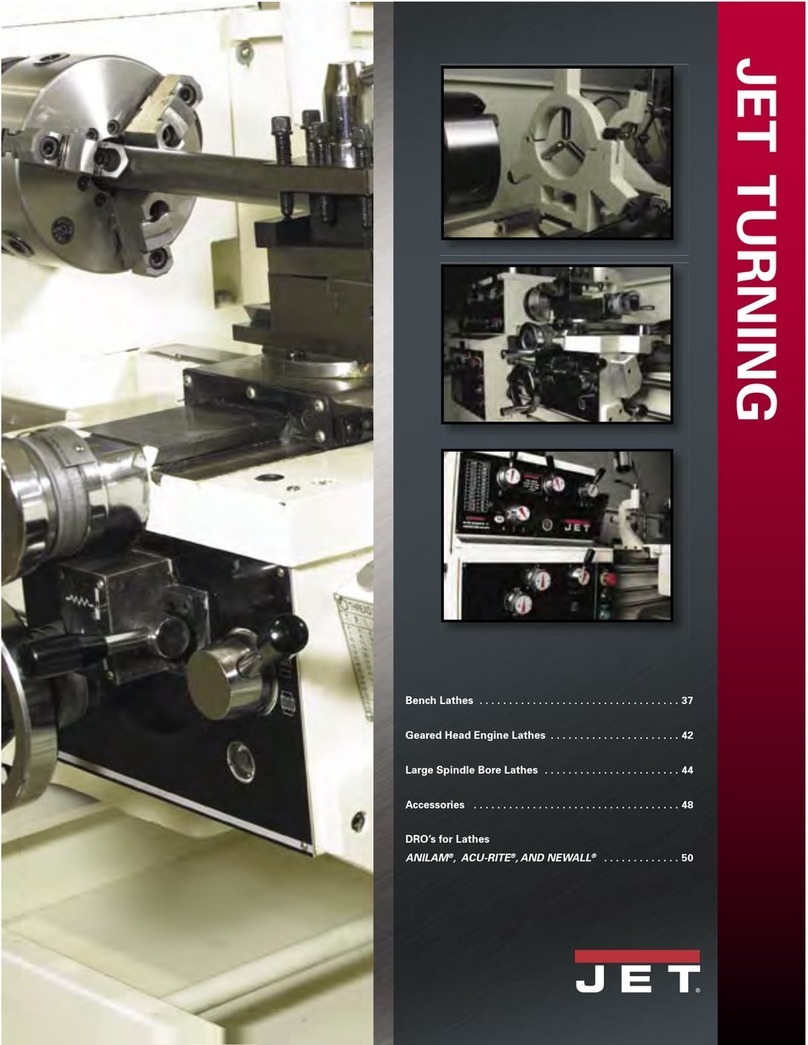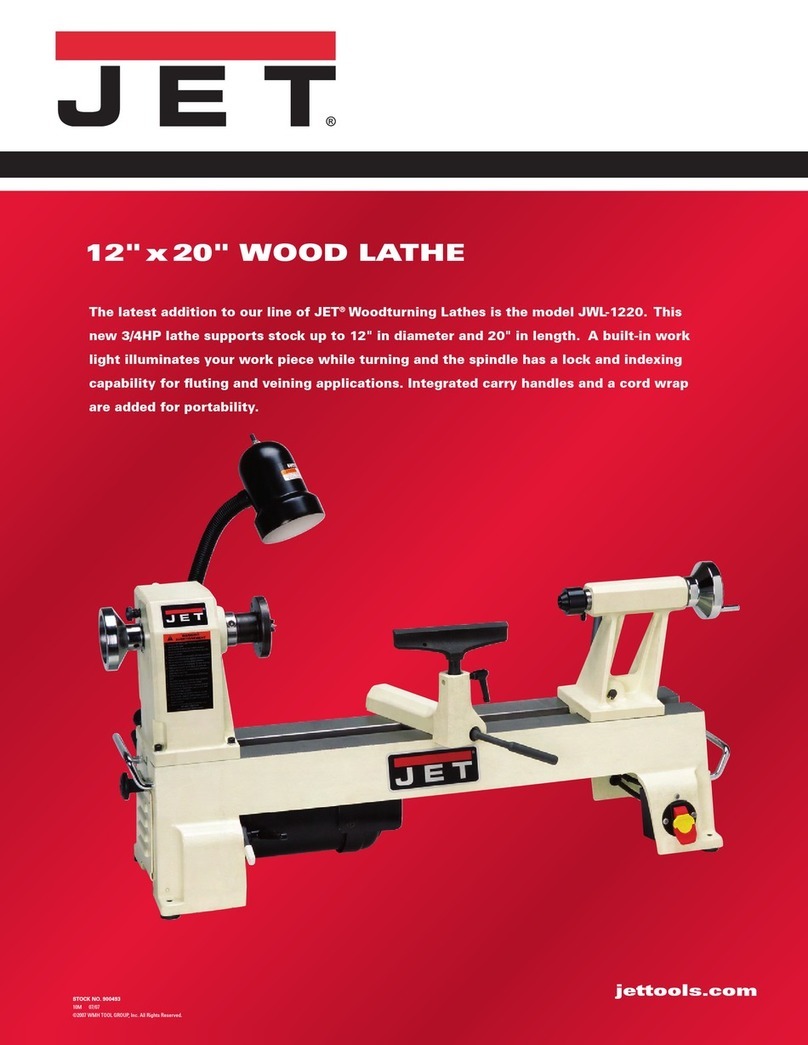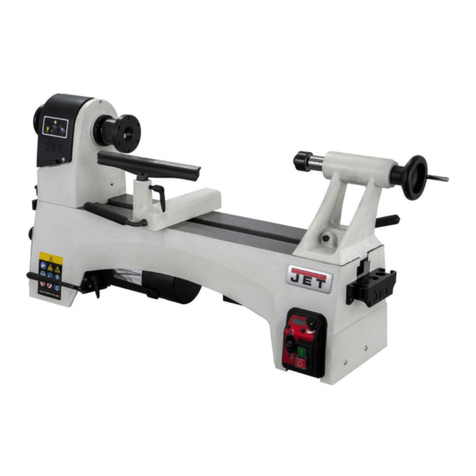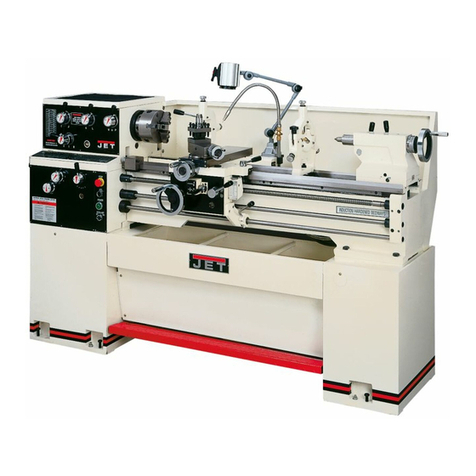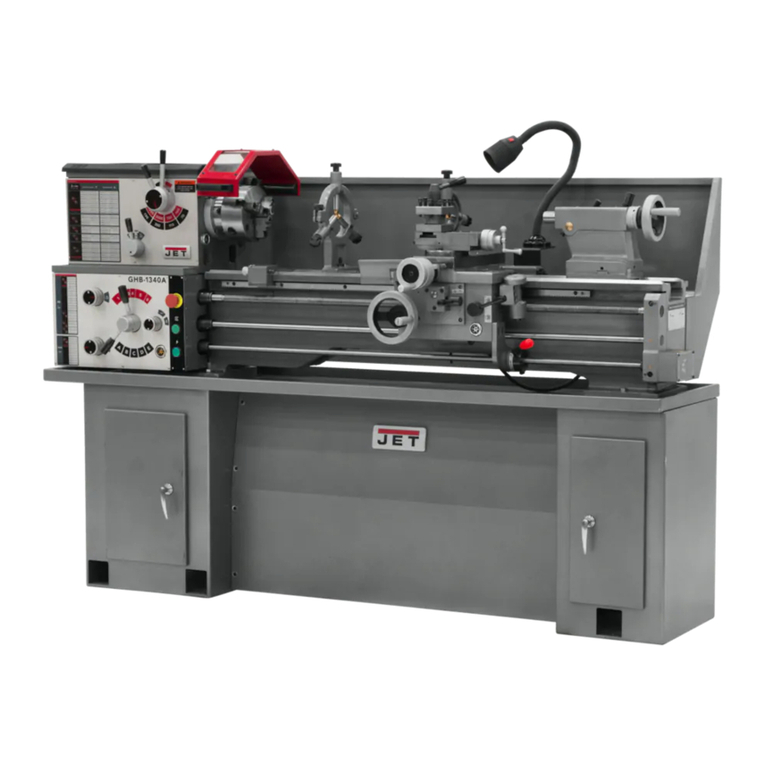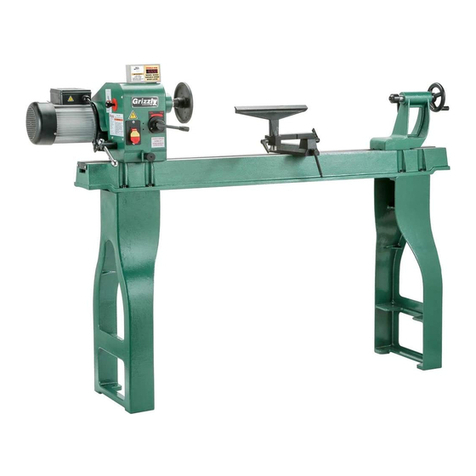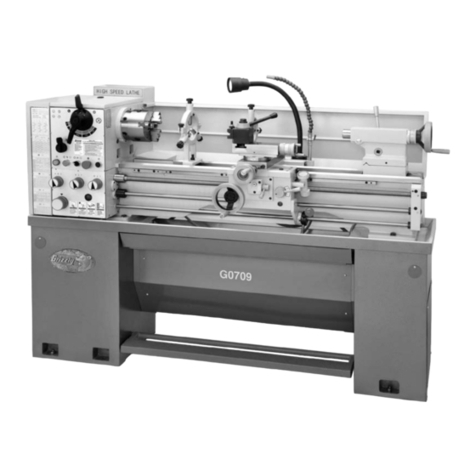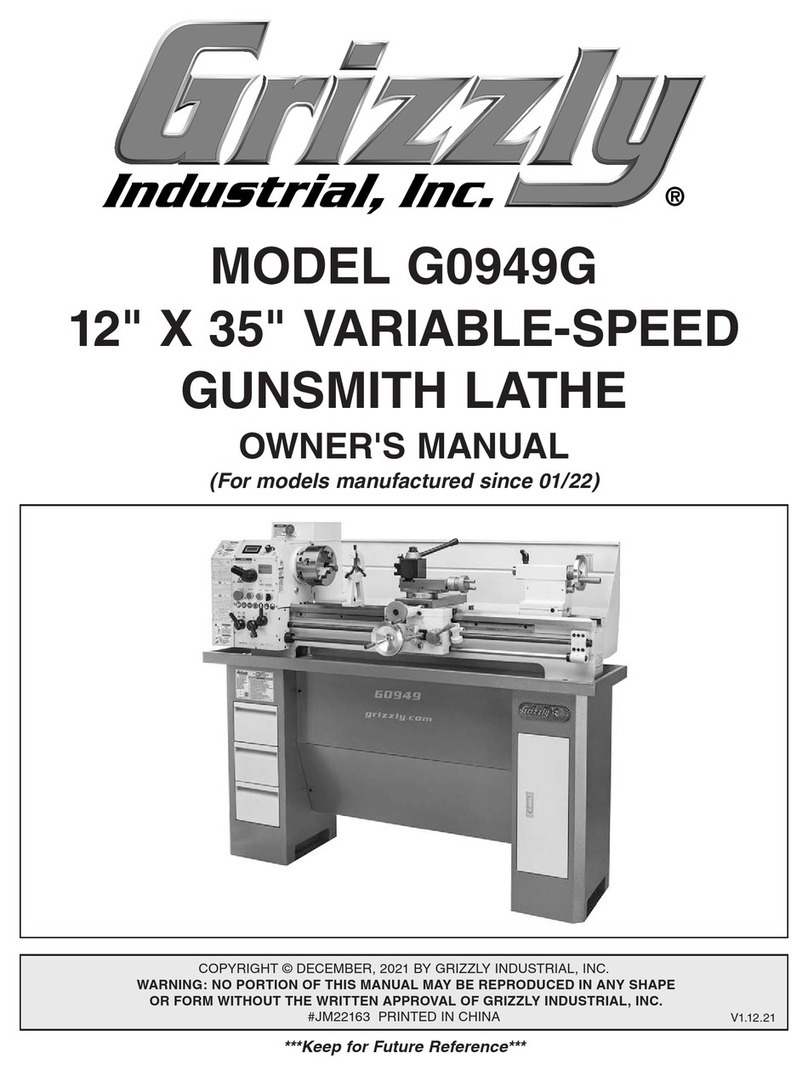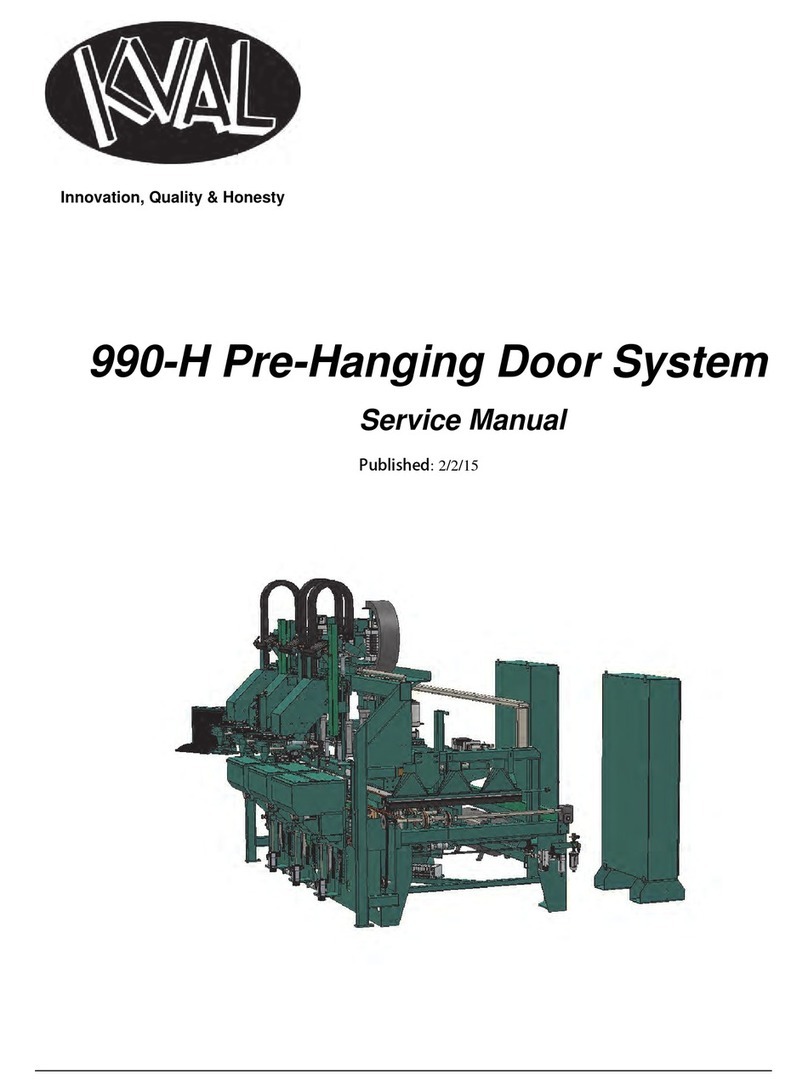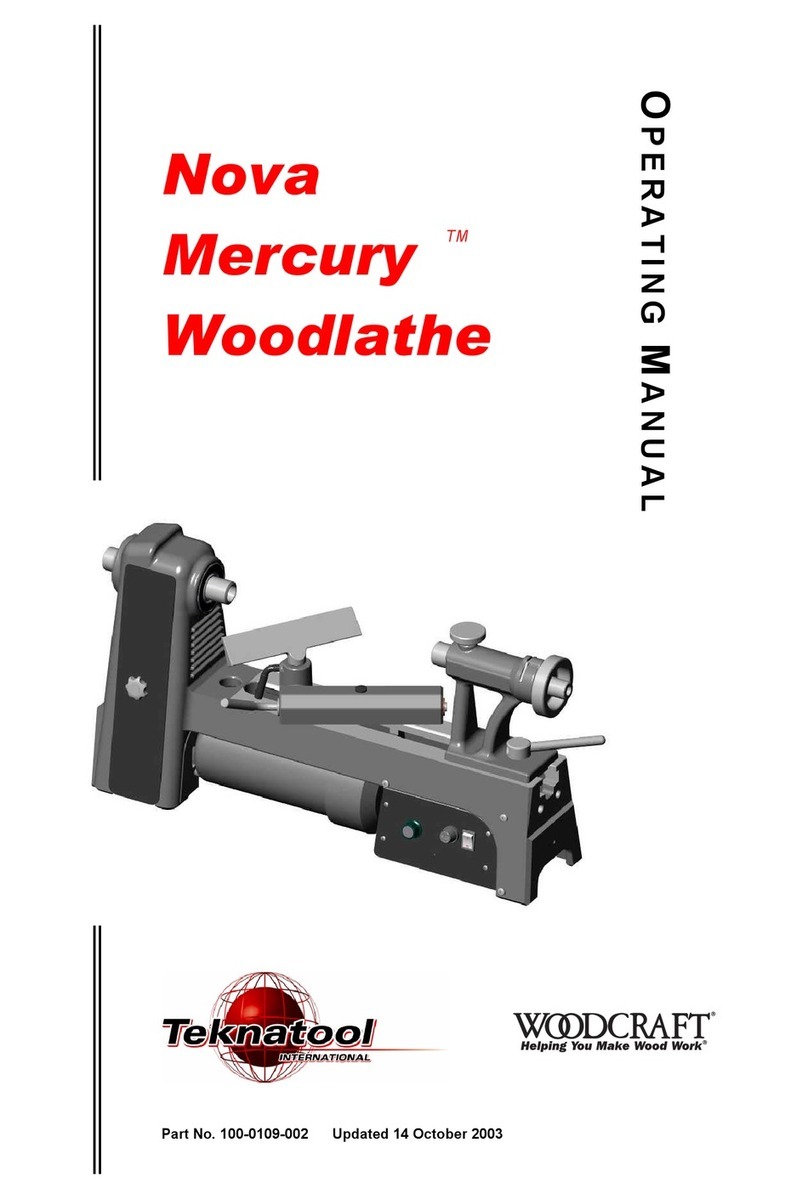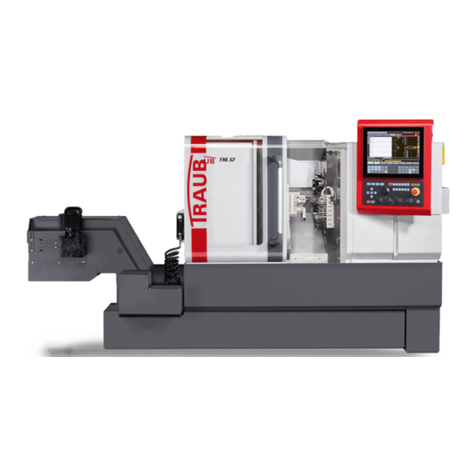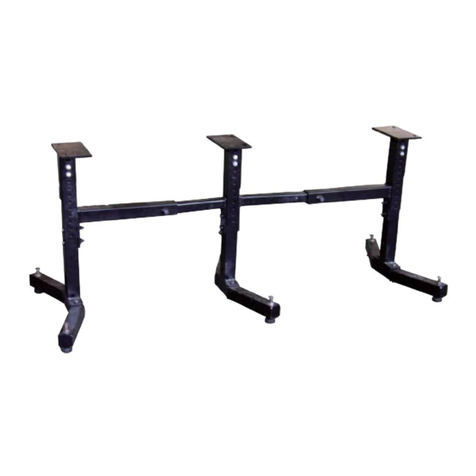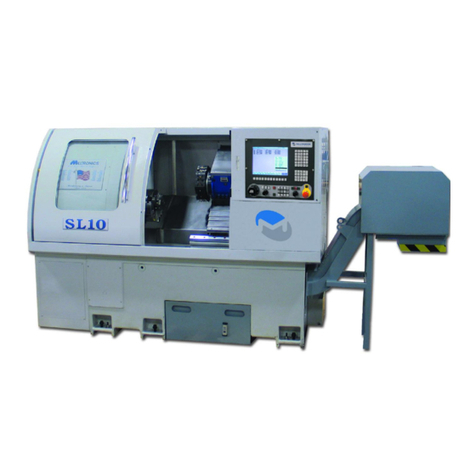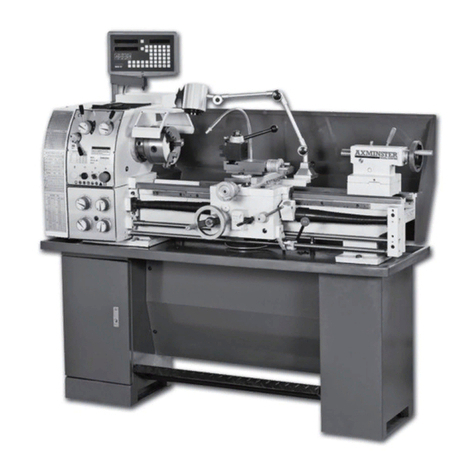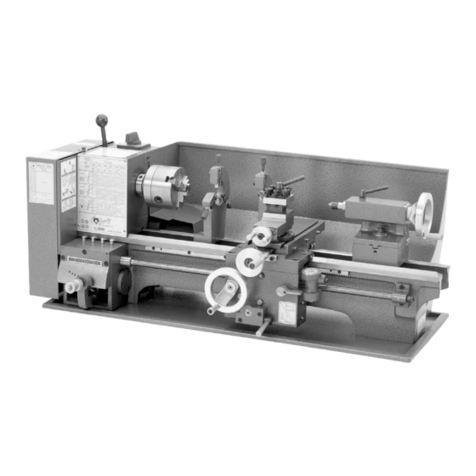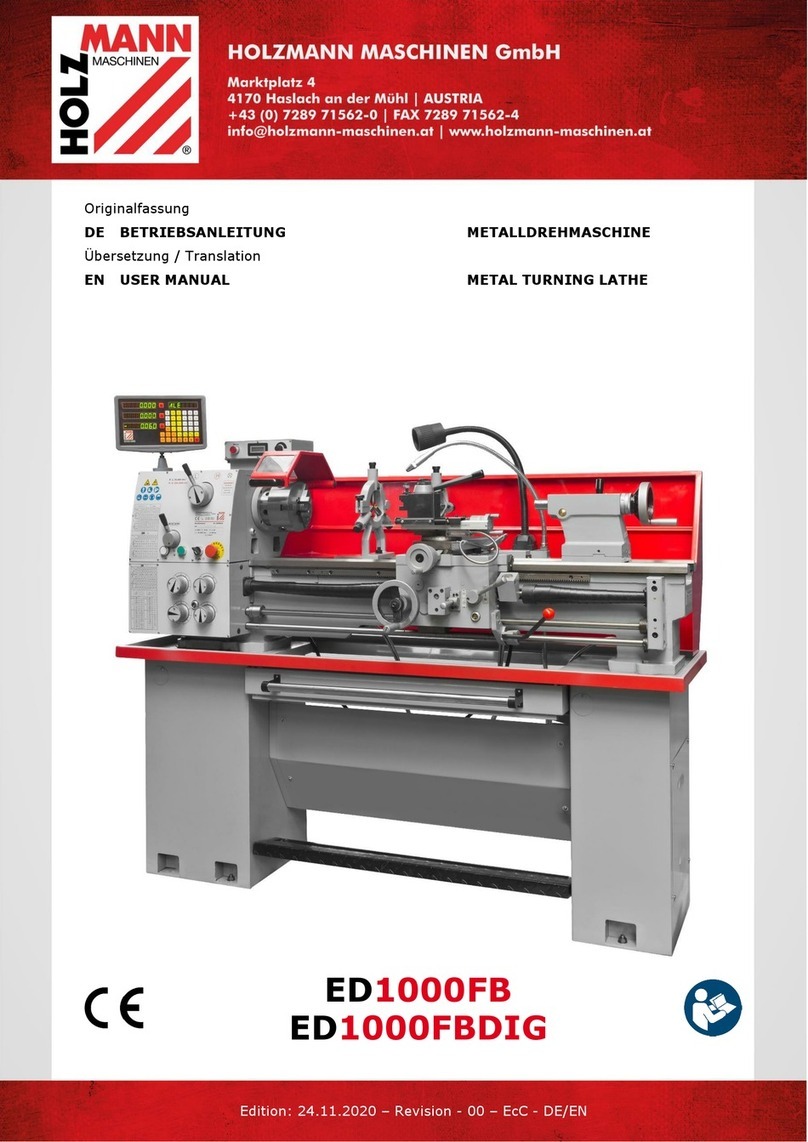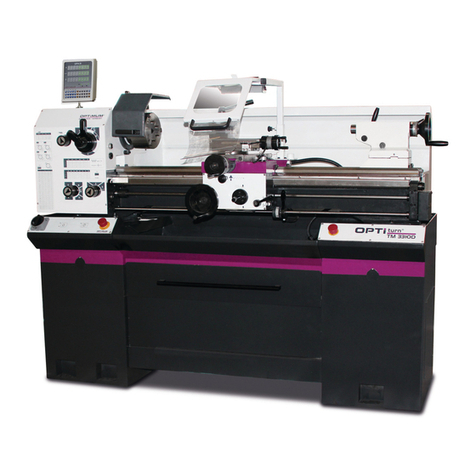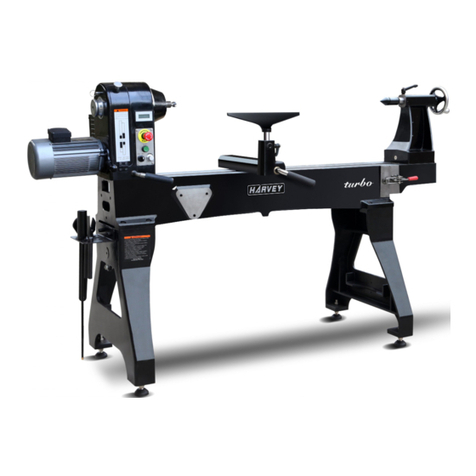
6
4.0 Specifications
Model Number........................................................................................................................................GH-1640ZK
Stock Number................................................................................................................................................321850
General Capacities:
Maximum Swing over Bed..................................................................................................................16” (406mm)
Maximum Swing over Cross Slide.......................................................................................................10” (254mm)
Maximum Swing Through Gap....................................................................................................23-7/32” (590mm)
Length of Gap..............................................................................................................................10-5/8” (270mm)
Distance between Centers................................................................................................................40” (1016mm)
Width of Bed...........................................................................................................................12-3/16” (309.6mm)
Motors and Electrical:
Main Motor................................................................................................... totally enclosed, fan-cooled, induction
Horsepower.............................................................................(2-speed): 7.5HP (5.6 kW), Low 5.5HP (4.1 kW)
Phase.......................................................................................................................................................3 PH
Voltage..............................................................................................................................................230V only
Full Load Amps...............................................................................................................................16.2/20.3 A
Cycle.......................................................................................................................................................60 Hz
Motor speed............................................................................................................................ 1150/1720 RPM
Coolant Pump Motor................................................................................................................................ Induction
Horsepower.............................................................................................................................................1/8HP
Phase.......................................................................................................................................................3 PH
Voltage.....................................................................................................................................................230V
Full Load Amps.......................................................................................................................................0.54A
Cycle.......................................................................................................................................................60 Hz
Power Transmission...............................................................................................................................v-belt (x4)
Controls circuit.......................................................................................................................................110V A.C.
Lamp circuit ............................................................................................................................................ 24V A.C.
Indicators circuit.....................................................................................................................................110V A.C.
Headstock and Spindle:
Spindle Bore......................................................................................................................................... 2” (51mm)
Spindle Mount................................................................................................................................. D1-6 Camlock
Spindle Taper with Sleeve..................................................................................................................MT-6 (MT-4)
Number of Spindle Speeds................................................................................................................................12
Range of Spindle Speeds.................................................................................................................42-1800 RPM
Distance Floor to Spindle Center (approx.)..............................................................................42-29/32” (1090mm)
3-Jaw Scroll Chuck:
Load Capacity......................................................................................................................... 330 lb (149.7kg)
Inside Diameter................................................................................................................................ 2” (51mm)
4-Jaw Independent Chuck:
Load Capacity............................................................................................................................551 lb (250kg)
Inside Diameter................................................................................................................................ 3” (76mm)
Carriage:
Maximum Tool Size............................................................................................................1” x 1” (25.4 x 25.4mm)
Maximum Compound Rest Travel...................................................................................................5-1/8” (130mm)
Maximum Compound Rest Swivel..........................................................................................................+/- 90 deg.
Maximum Cross Slide Travel........................................................................................................10-5/8” (270mm)
Maximum Carriage Travel...................................................................................................................36” (914mm)
Gearbox:
Number of Longitudinal Feeds......................................................................................................................... 122
Range of Longitudinal Feeds..............................................................................................0.0015 – 0.0913 in./rev
Number of Cross Feeds................................................................................................................................... 122
Range of Cross Feeds ........................................................................................................0.0006 – 0.0365 in/rev
Number of Inch Threads....................................................................................................................................61
Range of Inch Threads.................................................................................................................... 1-5/8 – 72 TPI
Number of Metric Threads.................................................................................................................................24
Range of Metric Threads ....................................................................................................................0.5 – 20 mm
Number of Diametral Threads............................................................................................................................45
Range of Diametral Threads...............................................................................................................3-1/4-96D.P.
Number of Modular Threads..............................................................................................................................20
